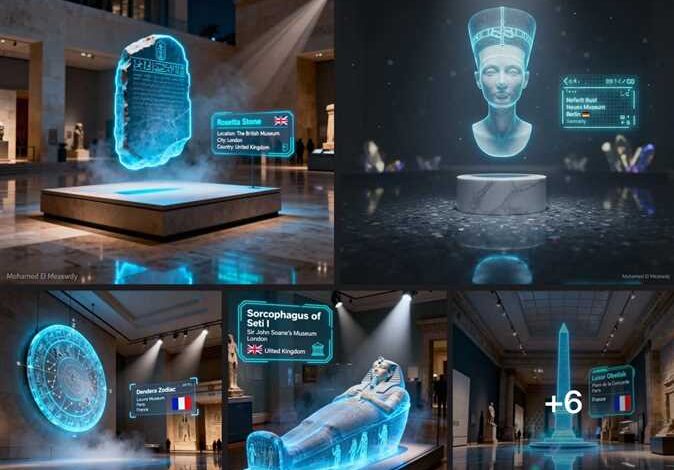
A social media campaign seeks to raise awareness towards returning stolen Egyptian artifacts to the Grand Egyptian Museum (GEM) through the use of hologram technology.
The aim is to transform the issue of stolen artifacts into an international public concern that cannot be ignored.
The idea centers on dedicating an entire hall within the GEM to display a three-dimensional digital hologram of the most famous Egyptian artifacts currently housed in museums around the world, such as the bust of Nefertiti in Berlin and the Rosetta Stone in the British Museum.
Alongside high-quality holograms, the plan will also involve providing informational labels detailing each piece’s history, its date of departure from Egypt, and its current location.
Visitors will then learn about all the stolen artifacts outside Egypt – potentially contributing to their return.
The concept was further developed using AI to project the holograms of the artifacts into museum display cases.
The idea quickly evolved with a new proposal to transform the initiative into an international pressure tool, including several ideas such as:
- A global petition document: Allocating an electronic document to collect signatures from visitors from all countries of the world – whether they are Egyptians or foreign tourists – to officially demand the return of these artifacts to their original home and the GEM.
- A message to foreign visitors: This step ensures that the foreign tourist, who previously had to visit other museums to see these artifacts, can become a partner in the campaign for their return
The aim is ultimately to spread awareness to visitors about how important reclaiming Egypt’s heritage is, and where their true home is.
Edited translation from Al-Masry Al-Youm




